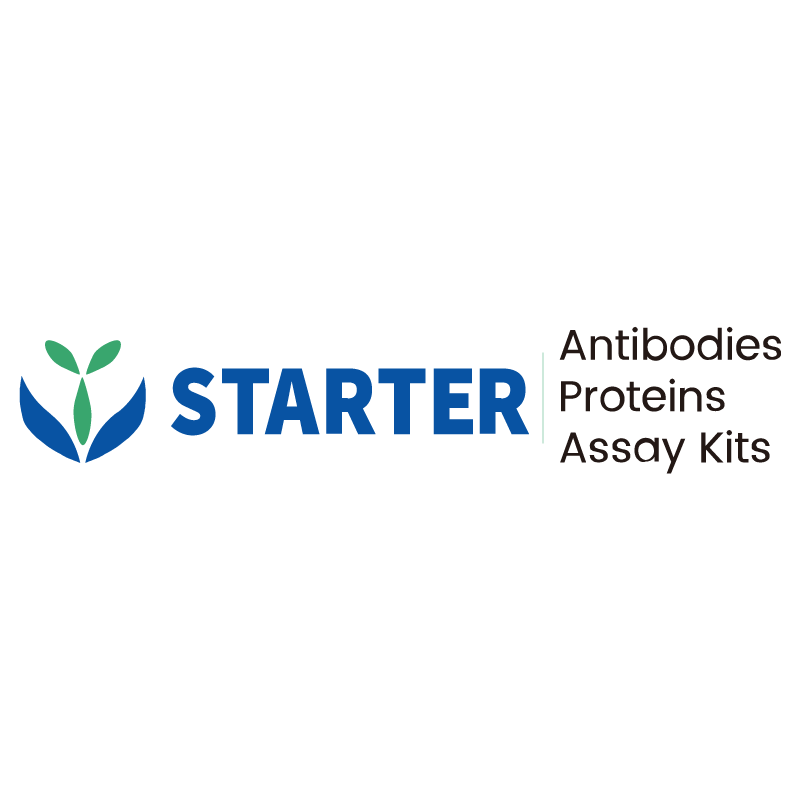WB result of Phospho-Stat3 (Ser727) Recombinant Rabbit mAb
Primary antibody: Phospho-Stat3 (Ser727) Recombinant Rabbit mAb at 1/1000 dilution
Lane 1: untreated HeLa whole cell lysate 20 µg
Lane 2: HeLa starve overnight, then treated with 200 nM TPA for 30 minutes whole cell lysate 20 µg
Secondary antibody: Goat Anti-rabbit IgG, (H+L), HRP conjugated at 1/10000 dilution
Predicted MW: 88 kDa
Observed MW: 90 kDa
Product Details
Product Details
Product Specification
| Host | Rabbit |
| Antigen | Phospho-Stat3 (Ser727) |
| Synonyms | Signal transducer and activator of transcription 3; Acute-phase response factor; APRF |
| Immunogen | Synthetic Peptide |
| Location | Cytoplasm, Nucleus |
| Accession | P40763 |
| Clone Number | S-1439-42 |
| Antibody Type | Recombinant mAb |
| Isotype | IgG |
| Application | WB, IP |
| Reactivity | Hu, Ms, Rt |
| Predicted Reactivity | Ck, Pg, Bv |
| Purification | Protein A |
| Concentration | 0.5 mg/ml |
| Conjugation | Unconjugated |
| Physical Appearance | Liquid |
| Storage Buffer | PBS, 40% Glycerol, 0.05% BSA, 0.03% Proclin 300 |
| Stability & Storage | 12 months from date of receipt / reconstitution, -20 °C as supplied |
Dilution
| application | dilution | species |
| Dot Blot | 1:1000 | |
| WB | 1:1000 | Hu |
| IP | 1:50 | Hu |
Background
Phospho-Stat3 (Ser727) refers to the phosphorylated form of the Stat3 protein at the serine residue 727. This phosphorylation event is significant for the activation of Stat3, a key transcription factor involved in various cellular processes including cell growth, survival, and immune responses. Phosphorylation at Ser727, although often considered a secondary event following Tyr705 phosphorylation, can occur independently and is associated with increased cell survival activity and nuclear translocation of Stat3. It has been shown to play a role in melanocytes and melanoma cells, where Ser727 phosphorylation can precede Tyr705 phosphorylation in the early stages of melanoma progression. Moreover, the constitutive Ser727 phosphorylation in melanoma cells is partially mediated by the B-Raf–MEK–ERK1/2 pathway, indicating its importance in cell survival and nuclear translocation of Stat3 in melanocytic cells. This modification is also implicated in the regulation of gene expression and cellular metabolism, suggesting its role in tumorigenesis and cancer progression.
Picture
Picture
Western Blot
IP
Phospho-Stat3 (Ser727) Rabbit mAb at 1/100 dilution (2 µg) immunoprecipitating Phospho-Stat3 (Ser727) in 0.4 mg HeLa starve overnight, then treated with 200 nM TPA for 30 minutes whole cell lysate.
Western blot was performed on the immunoprecipitate using Phospho-Stat3 (Ser727) Rabbit mAb at 1/1000 dilution.
Secondary antibody (HRP) for IP was used at 1/1000 dilution.
Lane 1: HeLa starve overnight, then treated with 200 nM TPA for 30 minutes whole cell lysate 20 µg (Input)
Lane 2: Phospho-Stat3 (Ser727) Rabbit mAb IP in HeLa starve overnight, then treated with 200 nM TPA for 30 minutes whole cell lysate
Lane 3: Rabbit monoclonal IgG IP in HeLa starve overnight, then treated with 200 nM TPA for 30 minutes whole cell lysate
Predicted MW: 88 kDa
Observed MW: 90 kDa
Dot Blot
Dot blot result of Phospho-Stat3 (Ser727) Recombinant Rabbit mAb
Lane 1: Stat3 (Ser727) phospho peptide
Lane 2: Stat3 unmodified peptide
Primary antibody: Phospho-Stat3 (Ser727) Recombinant Rabbit mAb at 1/1000 dilution
Secondary antibody: Goat Anti-rabbit IgG, (H+L), HRP conjugated at 1/10000 dilution


